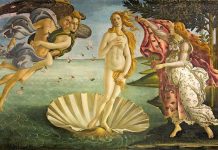There is an island in the eastern province of Chonburi’s Sattahip distict where sea turtles feel safe to lay their eggs. In order to keep the ecosystem in balance, the Royal Thai Navy’s Sattahip Naval Base set up Sea Turtle Conservation Center and has arranged its personnel to care for the animals.
Kram Island, free of tourists and local residents, is some four kilometres off shore, covers over 8,000 rai of farmland and is under the responsibility of the Royal Thai Navy.
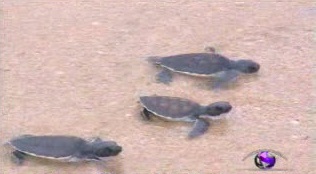
Marine turtles lay several thousand eggs annually at Kram Island. The considerable number of eggs is regarded the most abundant of all the islands in the Gulf of Thailand.
As natural security is also national security, the deployment of naval officers around Kram Island is strictly to protect the safety and well-being of the turtles.
“Marine natural resources are important to all Thais, for they are sources of food. If something bad happens to the sea turtles, it will affect the whole food chain,” said Rear Adm Tharathorn Khajitsuwan, commanding officer of Thailand’s Air and Coastal Defense Command.
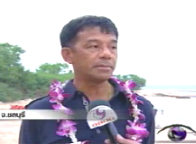
Green sea turtles and Hawksbill sea turtles usually lay eggs along the six beaches of this island in Sattahip district.
Although some of the eggs hatch naturally, about one-third of them are collected so as to be kept and buried in a protected environment hatchery areas to allow a greater survival rate than would otherwise occur. Here dozens of eggs are collected and reburied to protect them from other animals — and human predators as well — and that the baby turtles will not escape after hatching.
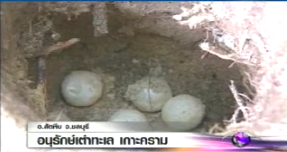
Forty-five days after the day the turtles laid their eggs, officials from Sea Turtle Conservation Center will visit the protected hatchery areas to see if any eggs have hatched from their shells. As they emerge, the baby turtles are moved to a pond for nursing care for three months. They will be set free to the ocean once they become strong enough.
Despite the care fully provided by the centre to the turtles, a related official said that the number of the reptiles has remained about the same over the years.
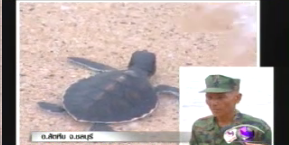
“In fact the number of sea turtles hasn’t increased greatly. The old ones die while the young ones take their places. There are around 20-30 new sea turtles annually, according to the microchips implanted in the animals’ bodies,” said Lt Somchai Timlamom, commanding officer of the Sea Turtle Conservation Center.
There are currently about 500 marine turtles in the Gulf of Thailand, which sadly already includes the number of sea turtles in Kram Island. The figure is relatively small and has dropped significantly due to human beings’ lack of concern for the environment.
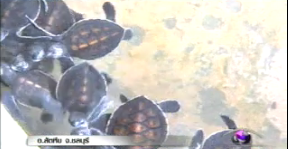
Despite the number, marine turtles by all means have amazing instincts. Although they are set free to the ocean when they are only three months old, they will go back to their home in Sattahip district to lay their eggs even after four or five years of their long journey, which could be as far as to the Philippines. The egg laying season is between May to July. (MCOT online news)



